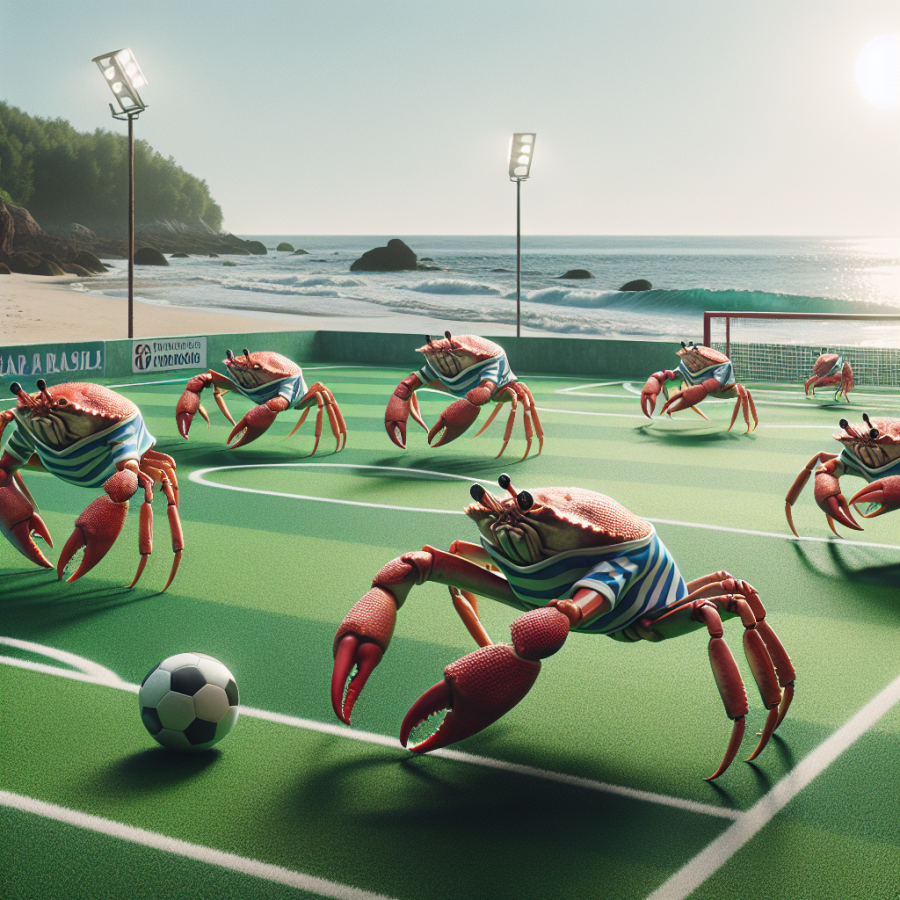Strategies and Rules Tailored for Crab Soccer Enthusiasts
Crab soccer, a whimsical variation of traditional soccer, plays out in a crouched position, with players scuttling about on hands and feet. This unconventional game requires a different strategic approach and set of rules to ensure an engaging and fair play experience. While participants may be drawn to the fun and quirky nature of the game, mastering crab soccer necessitates a thoughtful blend of teamwork, strength, and technique.
**Maintaining Form:**
The unique physical demands of crab soccer underline the significance of maintaining the proper crab position throughout the game. Consistency in form not only ensures fair play but also protects players from potential injury. Athletes should focus on strengthening their core and limb muscles, as these are crucial for sustaining the crab pose for extended periods. Regular exercises tailored to fortifying these muscle groups can include planks, crab walks, and reverse pushups, which mimic the movements and stresses of crab soccer.
**Spatial Awareness:**
Due to the limited mobility and visibility when in the crab stance, spatial awareness becomes vital. Players must develop an acute sense of their surroundings and teammate positions. Regular drills involving passing and movement in the crab soccer form can sharpen this awareness, creating a cohesive unit that can navigate the field more effectively. The ability to anticipate where the ball will go and which areas to defend or attack can give a team a distinct edge.
**Strategic Passing:**
In crab soccer, accurate and strategic passing is paramount, as the unconventional position hampers the ability to make long or high-speed kicks. Mastering short, controlled passes helps maintain possession and allows for more deliberate advancement of the ball. Teams should cultivate communication and passing patterns that account for the limitations of movement in crab soccer.
**Defensive Tactics:**
Defense in crab soccer is not just about blocking shots; it's also about positioning and collaboration. Due to the game’s nature, defenders will need to be particularly vigilant and ready to shift their bodyweight swiftly to intercept passes or block shots. Encouraging players to stay within a certain range of their goal and work together to cover open spaces teaches a defensive unit to function as a synchronized barrier.
**Special Rules for Safety and Fairness:**
The unconventional nature of crab soccer may necessitate specialized rules, particularly to ensure player safety. Restrictions on the type of contact allowed between players can prevent injuries related to someone flipping over or colliding at an awkward angle. For instance, rules could specify that shoulder barges and sliding tackles are not allowed.
Read also:
Conquering the Peaks: A Guide to Fell Running Success
Embracing the Fun of Crab Soccer: How It Diversifies the Traditional Sport
Crab soccer adds a playful and refreshing variety to the conventional form of soccer, with its unique rules and playing style redefining the very concept of teamwork and coordination on the field. Unlike traditional soccer, where players run upright, crab soccer sees participants scuttling across the floor on their hands and feet, with their bellies facing up, which humorously mimics the sideways movement of a crab. This often-comical posture is a significant divergence from the poised athleticism typically associated with soccer.
The whimsy of crab soccer not only makes the game accessible to players of all skill levels but also ensures that it is a less intimidating entry point for those new to sports. By focusing more on coordination and balance rather than speed and agility, crab soccer encourages inclusivity, wherein players who might feel left out in standard soccer can shine. This is particularly useful in educational settings, as it teaches children that physical education can be enjoyable, breaking the monotony of traditional sports.
Diversification in sports is critical not only for sustaining interest but also for developing a wide range of motor skills. Crab soccer challenges players to use different muscles and reflexes than those used in traditional soccer. As a result, participants can gain improved upper body strength, better coordination, and enhanced spatial awareness. The distinctive movements involved in crab soccer not only provide a full-body workout but also put a spotlight on the importance of strategy over physical prowess, as the unusual posture limits speed and typical soccer moves.
Moreover, crab soccer introduces a new level of strategy to the game. Since players can't move as quickly or freely as they can in standard soccer, they must think creatively to outmaneuver opponents. This strategic element fosters communication skills among players, as they are required to discuss and plan their moves more deliberately to succeed on the crab soccer field.
The game also engenders a less competitive and more collaborative environment, emphasizing fun over fierce competition. The inherent silliness of crab soccer naturally leads to laughter and enjoyment, which, in turn, enhances social interaction and rapport among players. This playful spirit promotes a positive attitude towards physical education and sportsmanship, instilling in players a sense of camaraderie and community.
However, the non-traditional nature of crab soccer does not diminish its value as a cardiovascular exercise or a means to teach fundamental sports principles. It retains the core objective of traditional soccer—scoring goals—but does so in a way that is less rigorous and more accommodating to varied physical abilities.




